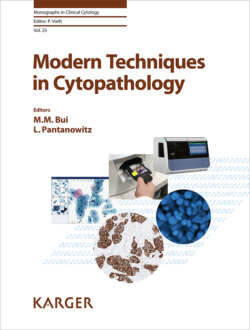Читать книгу Modern Techniques in Cytopathology - Группа авторов - Страница 20
На сайте Литреса книга снята с продажи.
Abstract
ОглавлениеCell blocks represent the convergence of cytology and histology. Processed as a formalin-fixed paraffin-embedded histology sample, the cell block is composed of cells and small tissue fragments condensed into a pellet. Unlike histology specimens, which have relatively consistent standard operating procedures, the protocols for cell blocks vary among laboratories. The reasons may be 2-fold. First, there is unavailability of an ideal cell block method – one that yields reproducible high cellularity, is not labor intensive and skill dependent, does not require the use of specific media, and is economical. Second, there is ongoing development and improvement of technologies in other aspects of medicine (e.g., minimally invasive procedures and molecular diagnostics) with demands to do more testing with less sample. As the traditional cell block methods have one or more shortcomings, there is ongoing interest in meeting the challenges and developing improved cell block methodologies to consistently provide high cellularity for diagnosis and ancillary testing. The basic techniques and attributes of traditional (e.g., plasma-thrombin, HistoGel) and newer methods, including the Cellient Automated Cell Block System, are discussed. The advantages of cell blocks, such as their ability to integrate with other existing technologies, such as whole-slide imaging, are also highlighted.
© 2020 S. Karger AG, Basel
